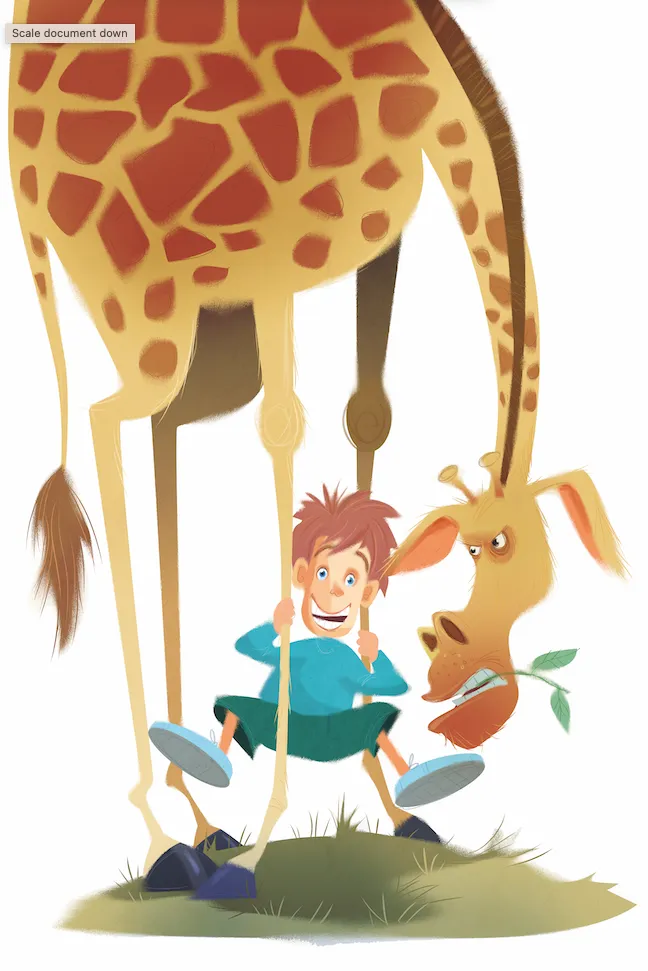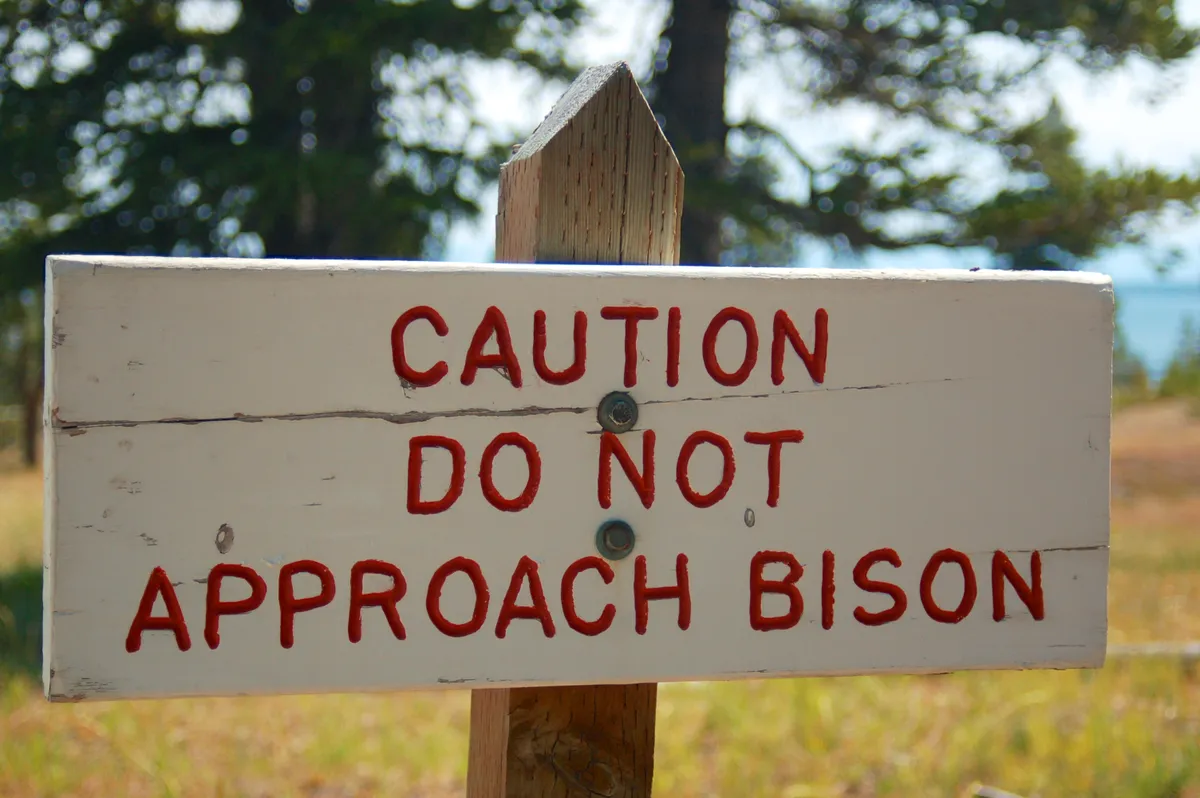In an era where social media can govern the way we experience everything, including our encounters with the natural world, are people behaving increasingly recklessly around wildlife for likes and followers? Photojournalist Graeme Greene examines the rise of the reckless wildlife tourist.
Do you see it? (He’s) petting it. Do you see it?” an incredulous male voice asks, as a tourist is seen opening the door of a vehicle, reaching out an arm and attempting to stroke a passing lioness. “This is… not good.”
This video circulated on social media earlier this year, showing a man on safari in the Serengeti who wanted a very close encounter. The lioness shrugged him off, but it could have gone horribly wrong.
It’s far from a one-off. I recently saw another video showing an impatient driver attempting to motor along a road where a pride of lions was resting, running over one individual’s tail and causing the lion to spring up and attack the vehicle in self-defence. And yet another in which a leopard cub was allowed to almost climb into the open doors of a safari van, even though its protective mother was not far away, so a photographer could get a close-up.
There are hundreds more examples of people doing brainless things around wild and dangerous animals, from taunting tigers to picking up rattlesnakes.
What were they thinking?
Idiocy around wildlife risks the safety of both people and animals. People risk being attacked, mauled and possibly killed, while animals can be harmed, removed or put down, irrespective of whether they were only defending themselves. Animal attacks can also cast a destination in a negative light, causing temporary closures or deterring visitors. All just so someone could boast that they’d stroked a lion, or captured a moment on a cameraphone.
The Serengeti incident received a swift response. “The Tanzanian government sent a notification to all tour operators saying animals can’t be touched or allowed to jump onto trucks, ever,” the CEO of a luxury safari company in Tanzania, who preferred not to be named, tells me. “There had been several videos of cheetahs jumping on the roofs of safari vehicles. But then this video went viral of a man who had the audacity to get out of a vehicle in the middle of the Serengeti to pet a lioness. We were all shocked and annoyed. The tour operator was immediately called out and fined.”
But what were these people thinking? Is stupidity on the rise? Or are we just more aware of these incidents because they are snapped on cameraphones and shared on social media?
“Tourists are getting more and more reckless around wildlife,” says wildlife photographer Anette Mossbacher. “Ten or fifteen years ago, it wasn’t as bad. Today, people get out of their cars to take selfies with elephants or rhinos in the background, or send their children over to giraffes to take photos with the animals’ long legs as the backdrop.”

Photographers are sometimes part of the problem, pushing the boundaries to get that incredible shot. But many people working in wildlife areas see social media as the main driver of reckless behaviour. “People risking their life or doing stupid things with wildlife are after ‘likes’ and ‘followers’, something to show off on Instagram,” says Mossbacher. “The greater the risk, the more ‘likes’ they get. With some clients, it seems like a sickness or addiction.”
Wildlife photographer Paul Goldstein, who owns a camp in Kenya’s Maasai Mara conservancies, refers to the obsession as “faunal porn”. “I’ve even seen people stopping wildebeest crossings,” he says. “It’s fuelled by the pressures and the narcotic of Instagram, where everything is about vanity. It’s ignorant and extremely dangerous. Every tourist in a wildlife area must be given proper information on how to behave around animals. And prosecution must be severe.”
A long age of stupidity
Yet social media isn’t entirely to blame. People have always taken risks for an ‘experience’ or for the sheer hell of it. Foolish behaviour and a tendency to get cocky around dangerous animals must have been around since the dawn of humanity. A hunger for attention online might drive some of the current madness, but some individuals might be trying to recreate a piece of the action they’ve seen on television. Perhaps the adrenaline rush when close to wild animals causes an evaporation of common sense.
“There’s a worrying lack of awareness that animals several times our size, weight, speed and strength can easily hurt us,” says wildlife photographer David Lloyd. “I don’t think parks are doing enough to raise awareness. Tourists need to know how their presence can affect wildlife. A good example is cheetahs on vehicle rooftops. It may be a thrill for the bystanders, but the consequences if a mother cheetah falls off would be severe. She would no longer be able to hunt, so her cubs could easily starve.”
“My perception is that the problem is increasing,” says Philip Muruthi, vice president of species conservation and science for the African Wildlife Foundation. “We shouldn’t play with large, dangerous animals, or even smaller ones. These are parks, not petting shops.”
Is education the answer, or should there be tougher penalties for those who take silly risks? Perhaps both. “People aren’t getting the education about why they need to stay away from wildlife, including avoiding diseases, keeping people secure and letting wildlife be wild,” says Muruthi. “We need to educate tourists through signs, pamphlets and frontline drivers. We should adhere to guidelines, and there needs to be enforcement through the law.”
No one understands the importance of rules and regulations in Africa’s parks and reserves better than expert local guides. But there’s also a pressure on guides and drivers to appease their clients, who’ve often paid vast sums of money to be there. Saying ‘no’ risks confrontation, complaints and losing out on tips. “It’s never a good experience to be on a safari with disgruntled guests, but if they’re not happy because I put safety first and adhere to the laws governing national parks and game reserves, there’s not much I can do about it,” says Kabelo Kgafela, a safari guide in Botswana. “I’ve seen the dark side of tip-driven guiding. It leads people to disregard the environment and safety of everyone, including the animals. Chasing tips has never been my objective.”
Guides often have to act as babysitters for tourists who should know better. “In Akagera National Park, a young guest once got out of the vehicle to take a selfie with a nearby giraffe,” recalls Emmanuel Rulinda, a guide from Rwanda. “I was insisting he had to get back in, then I saw a buffalo charging towards him. Thankfully the engine was running and I was able to quickly move the vehicle, blocking the buffalo from going straight at him. The boy rushed back into the vehicle, then the buffalo hit it twice and damaged one of the front lights. The boy’s mother was crying, begging me to get them out of the park.”
A worldwide problem
Irresponsible tourism is not unique to Africa, of course. On an expedition I went on to Antarctica, passengers were given a detailed briefing on how to behave around wildlife, including keeping a safe distance from penguins, yet two guests later shared pictures they’d taken of themselves patting a penguin and posing for photos beside it.
Guides I’ve met around the world have reported everything from tigers being pelted with stones to ‘react’ for photos to snorkelers trying to ride turtles.
It’s selfish, but it’s also ignorant. “There are instances when people behave irresponsibly that aren’t necessarily always their fault,” says Jaisal Singh, founder of a conservation-tourism company in India. “It’s down to a lack of awareness about the wild. Education and communication are key. We take it for granted that people know how to behave around wildlife, but visitors, especially first-time visitors, need to be briefed. They can’t be automatically expected to understand how it all works.”

Just as bottles of bleach shouldn’t need to have a label saying “Do not drink”, tourists in Yellowstone shouldn’t need to be told not to take a selfie with a bison. But it still happens. “Visitors getting too close to bison and getting injured has become an all-too-common occurrence,” says Chamois Andersen, Defenders of Wildlife’s senior representative for the Rocky Mountains and Great Plains. “The park even has dedicated rangers stationed where the bison are, to educate people who get out of their vehicles and get too close.”
Keeping wildlife wild
Again, the question is whether ‘awareness-raising’ is enough, or whether the law needs to take a firmer hand. “More education is clearly needed,” says Andersen. “Bans to certain areas would be unfortunate, but if we keep seeing adverse impacts to animals and injuries to people who don’t follow the rules, we won’t be able to observe these animals in the wild in the park. Keeping bison wild should take precedent.”
Most people who travel to see wildlife don’t want to harm animals – they simply don’t always understand the impacts their actions can have. “People request to go off-road on safari, which can be bad for small animals and ground-nesting birds,” says Alexandra Matts, director of travel company Extraordinary Africa. “But when we explain the damage this causes, they are happy to stay on the track.”
Social media might inspire some terrible behaviour, but the same platforms in turn allow acts of lunacy to be called out online. “There have always been idiots – they are just more visible now,” says Matts. “But it also means there are more recordings to name and shame, so it runs both ways. If people who are new to safaris see a picture of a cheetah on a car in the Maasai Mara or someone walking with a lion cub, they might think “That looks cool”, without understanding the downsides. But the culture on the ground is that it’s definitely not “cool” to mistreat animals. We need to make sure clients understand that, and change perceptions.”
Main image: © Eric Smith
Fools in the flesh: six examples of wildly dangerous behaviour witnessed by professional photographers
“In the Great Smoky Mountains National Park, USA, a man got out of his car with a child to chase a black bear cub. Its mother came out of the bushes and I clapped loudly to distract her. The man picked up his child, ran to his car and drove off, almost crashing into a tree.” Michael Tweddle
“On safari in India, we took a break. I warned my guests not to feed the langurs on the roadside. When I came back from the restroom, I saw langurs on the vehicle. One took a guest’s handbag with her wallet, phone and ID cards.” Shibu Preman
“In Ningaloo Reef, Western Australia, we always tell people not to touch anything, even coral. Yet I have seen people grab, stand on and break off bits of coral. I’ve also seen people patting turtles and breaking off crayfish feelers.”Aimee Jan
Hidden threat “At a waterhole in Etosha National Park, Namibia, a woman stepped out of the car to be photographed. I told her to get back in the car as there was a leopard right in front of her, getting ready to pounce.” Anette Mossbacher
“In Svalbard, Norway, I’ve witnessed photographers entering Arctic tern nest-sites in order to be ‘dive-bombed’, so they could get wide-angle close-ups. It drives me nuts. Daisy Gillardini
“In the Maldives, I saw more than 20 scuba divers blocking the natural channel of tiger sharks. They had metal rods for protection. Sharks definitely wouldn’t like being prodded.” Matt Porteous